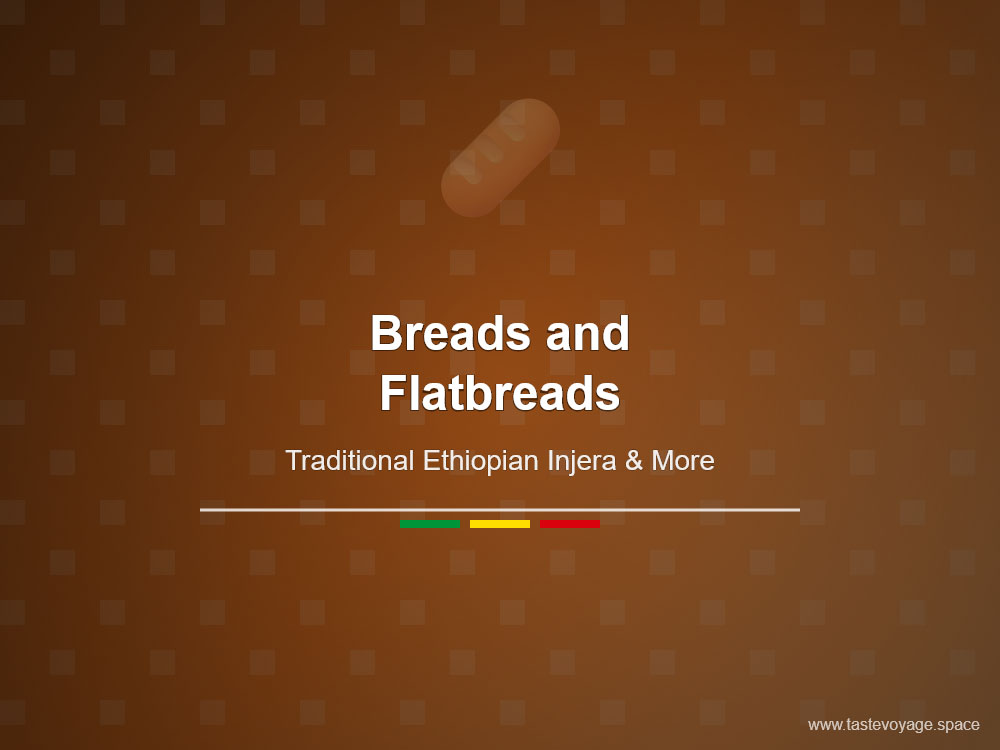Ethiopian Traditional Bread Serving: Top Methods & Tips
Travel the World Through Food >> Breads and Flatbreads>>Ethiopian Cuisine>> Ethiopian Traditional Bread Serving: Top Methods & Tips
Ethiopian Traditional Bread Serving: Top Methods & Tips
Discovering Ethiopian Traditional Bread Serving Methods
Ethiopian Cuisine is renowned for its rich flavors, vibrant colors, and unique culinary traditions. Among its most iconic elements is the way bread is used not just as a food item, but as an integral part of communal dining and cultural expression. Ethiopian traditional bread, particularly injera, plays a central role in the way meals are served, shared, and celebrated. Exploring these serving methods offers a window into Ethiopia’s deep-rooted food culture and the significance of bread as a symbol of unity and hospitality.
The Significance of Injera in Ethiopian Culture
Injera is more than just bread; it is a cultural emblem. Made from teff flour, it boasts a spongy texture and a slightly sour taste, which perfectly complements the rich Stews and vegetable dishes that accompany it. In Ethiopian tradition, injera is often considered a social and spiritual symbol. It embodies the ideas of sharing, community, and togetherness, which are central to Ethiopian social life. Serving injera at a meal signifies hospitality, warmth, and respect for guests.
Serving Methods that Foster Connection
One of the most distinctive aspects of Ethiopian dining is the communal way of serving and eating. In traditional settings, a large piece of injera is laid out on a shared platter. This serves as the base for various dishes, such as lentil stew, beef sauces, or vegetable mixes. Instead of using utensils, diners tear off a piece of injera and use it to scoop up the accompaniments. This method emphasizes a tactile connection to the food and encourages a sense of closeness among those sharing the meal.
The Art of Eating with Injera
Eating injera is an experience that combines taste, tradition, and social interaction. The soft, pliable bread absorbs the flavors of the accompanying dishes, enhancing the overall dining experience. Ethiopian serving methods often involve arranging the bread and dishes in a way that promotes shared enjoyment. Guests are invited to partake in the ritual of tearing, dipping, and passing food among friends and family. This practice reinforces bonds and fosters a welcoming atmosphere.
Cultural Etiquette and Hospitality
In Ethiopian culture, serving bread in a traditional manner is a gesture of respect and generosity. Hosts take pride in presenting a well-arranged platter of injera and accompanying dishes. Guests, in turn, show appreciation by engaging in the shared eating experience. This tradition underscores the value placed on community, respect, and the joy of sharing good food. The serving methods highlight Ethiopian hospitality and the importance of food as a means of bringing people together.
The Culinary Significance of Ethiopian Bread Serving Methods
The way bread is served in Ethiopia is a reflection of an intricate culinary heritage. It demonstrates a harmonious balance between flavor, presentation, and social interaction. The serving style transforms a simple staple into an experience that celebrates unity and cultural identity. It encourages a communal approach to eating, making every meal a shared journey rather than just a routine act of nourishment.
Embracing Ethiopia’s Food Culture
Understanding Ethiopian traditional bread serving methods offers insight into a nation’s values and social fabric. It reveals the deep respect for community and the joy of shared experiences. Whether enjoyed in a bustling restaurant or a family home, the way injera is served and consumed embodies Ethiopia’s warmth, hospitality, and culinary artistry.
In conclusion, Ethiopian bread serving methods highlight the importance of food as a cultural connector. They showcase the beauty of communal dining and the deep-rooted traditions that make Ethiopian cuisine truly special. Embracing these customs allows us to appreciate the rich heritage behind every bite, celebrating a time-honored tradition of sharing, respect, and togetherness.
